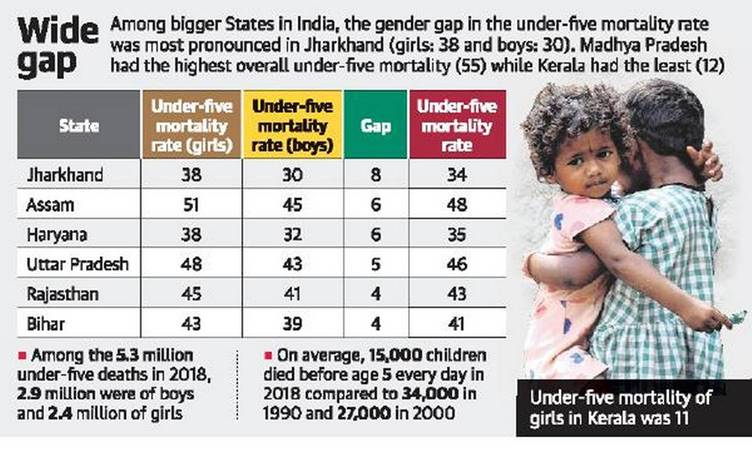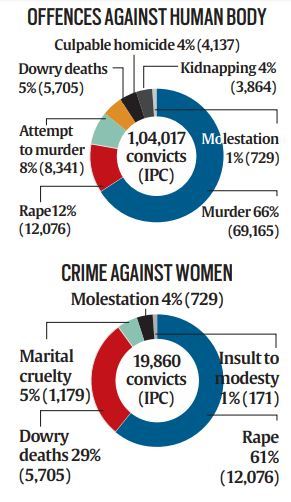



Private property is a fundamental right, says SC
Court observation:
- Right to property is a human right. The State cannot take possession of it without following due procedure and authority of law.
- The State cannot trespass into the private property of a citizen and then claim ownership of the land in the name of ‘adverse possession’.
- Grabbing private land and then claiming it as its own makes the State an encroacher.
- The State cannot be permitted to perfect its title over the land by invoking the doctrine of adverse possession to grab the property of its own citizens.
- This was while hearing a plea filed by Vidya Devi, a widow, whose four acres of land was taken over by the Himachal Pradesh government in 1967.
- The Supreme Court noted that in 1967, ‘right to private property was still a fundamental right’ under Article 31 of the Constitution.
- Article 300A required the State to follow due procedure and authority of law to deprive a person of his or her private property.
In a landmark order, the Tripura High Court has ordered the police to refrain from prosecuting a man, who was arrested over a social media post.
- Posting on social media was tantamount to a “fundamental right” applicable to all citizens, including government employees.
- In compliance with the court’s order, the police have now erased Sections 120(B) and 153(A) of the Indian Penal Code from the First Information Report.
Kaziranga recorded 96 species of wetland birds — one of the highest for wildlife reserves in India, according to the second wetland bird count.
- Bar-headed goose, common teal, northern pintail, gadwall, common coot, lesser whistling duck, Indian spot-billed duck, little cormorant, ferruginous duck, tufted duck, Eurasian wigeon, Asian open bill, northern lapwing, ruddy shelduck and spot-billed pelican.
- Data on avian wealth is important because the wetlands nourish Kaziranga's ecosystem.
- Increase or decrease in the number of birds is indicative of the park's health.
About Kaziranga:
- Kaziranga National Park is a national park in the Golaghat, Karbi Anglong and Nagaon districts of the state of Assam, India.
- The sanctuary, which hosts two-thirds of the world's great one-horned rhinoceroses, is a World Heritage Site.
- Kaziranga is home to the highest density of tigers among protected areas in the world and was declared a Tiger Reserve in 2006.
- BirdLife International recognizes Kaziranga as an Important Bird Area for conservation of avifaunal species.
As per the census, the number of mature crocodiles in Ghodahada reservoir and its adjoining area has increased from 58 in January 2019 to 65 in 2020.
There are three primary species.
- The mugger (or marsh) crocodile is found in lakes and rivers throughout the country.
- The saltwater crocodile is found along the eastern coast of the country and the Nicobar and Andaman Islands.
- Saltwater crocodiles live in the mangroves of Bhittarkanika and Sunderbans, Mahanadi Delta and in the swamplands in Odisha and West Bengal (including rivers).
- The gharial is found in river areas, though is greatly reduced from its previous range.
A Coonoor-based trust proposes to plant more than 10,000 trees in the Nilgiris. However, there is a problem: almost all of them are exotic flora — from avenue trees such as jacaranda, podocarpus, pine and bottlebrush.
- Exotic trees such as pine, podocarpus and cypress trees have a huge impact on soil chemistry on the ground where they are planted, preventing native grass, plants and herbs from taking root underneath the canopy.
- It has a knock-on effect on wildlife resulting in their vacating the areas.
- When exotics take root in a particular area they increase the water demand in that region, impacting not just the Nilgiris but other districts further downstream that rely on rivers emanating from the hills.
- Growing exotic trees in the Nilgiris is counterproductive to conservation and ensuring biodiversity.
- The roots of these trees are very shallow and the trees can be uprooted by high velocity winds and heavy rain, which characterise the monsoons in the Nilgiris.
- Forest Department has only enough native trees to afforest their reserve forests, so they do not give out any saplings to private individuals.
- They lead to better soil stability of the slopes on which they are planted.
- The government should come up with a policy that stipulates that only native flora should be planted in public spaces in the Nilgiris because of its ecological significance and its unique biodiversity.
- There is need to have a better understanding of the best ecological restoration practices that can be implemented when working in a landscape of the Nilgiris.
- Large-scale planting of exotics in ecologically sensitive areas must be discouraged.
- Shola tree species requires a lot of maintenance post-planting to ensure their survival. Maintaining a Shola nursery is indeed very difficult as the trees are very slow in growing.
- The annual bird census will commence in the Coringa Wildlife Sanctuary (CWS) and surrounding wetlands in the Godavari mangrove cover on the east coast.
- Indian Skimmer, a water bird species has started visiting the Godavari mangroves for three years. The species can be sighted only in three places in the country, including the Chambal River in Central India.
- Conservation status of Indian Skimmer is Vulnerable as per IUCN red list data.

- It was Levels and Trends in Child Mortality’ report by the United Nations (UN) inter-agency group for child mortality.
- In 2018, fewer countries showed gender disparities in child mortality.
- Across the world, boys are expected to have a higher probability of dying before reaching age five than girls.
- This trend was not reflected in India. The States with the highest burden of neonatal mortality are Madhya Pradesh, Odisha and Uttar Pradesh, with 32, 33 and 30 neonatal deaths per 1,000 live births, respectively.
- Jharkhand, Bihar and Uttarakhand showed the largest gender gaps in under-5 mortality.
- The burden of child mortality is determined both by the mortality rate (the proportion of children who die) and by the estimated population of any given State (total number of annual births).
- Uttar Pradesh is the State with the highest number of estimated newborn deaths in India, both because of the high neonatal mortality rate and because of the large cohort of births that occur every year in the State.
- Pre-term birth
- Intrapartum related events
- Neonatal infection
- Poor nutritional intake during pregnancy
- Lack of healthcare both before and during the birth
After a sustained campaign, heritage lovers and officials have been successful in almost stopping the stone-pelting ritual at Bojjannakonda, a famous Buddhist site at Sankaram, 3.5-km from Anakapalle and 41-km from here.
- The Indian National Trust for Art and Cultural Heritage (INTACH) is a non-profit charitable organisation registered under the Societies Registration Act, 1860.
- In 2007, the United Nations awarded INTACH a special consultative status with United Nations Economic and Social Council.
- INTACH was founded in 1984 in New Delhi with the vision to create a membership organisation to stimulate and spearhead heritage awareness and conservation in India.
- Bojjannakonda and Lingalakonda are two Buddhist rock-cut caves on adjacent hillocks.
- They are situated near a village called Sankaram in Vishakhapatnam in the Indian state of Andhra Pradesh.
- All the 3 phases of Buddhism (Hinayana, Mahayana and Vajrayana) flourished at Sankaram (Sangharam as it was called then).
- Groups of rock-cut and brick stupas and small chaityas surround this stupa.

- Indian prisons have increased their capacity but this has not kept pace with the growth in the number of prisoners.
- The capacity of prisons has increased from 3, 80,876 in 2016 to 3, 96,223 in 2018 (as of December 31), or by 4.03% during 2016-2018.
- Number of prisoners lodged in these jails has increased from 4, 33,003 to 4, 66,084, or by 7.64%.
- Uttar Pradesh has reported the highest occupancy rate (176.5%) followed by Sikkim (157.3%) and Delhi (154.3%).
- The number of prisons has decreased by 5%, from 1,412 in 2016 to 1,339 in 2018.
- Nearly 2,000 children were living in jails in India along with their imprisoned mothers.
- 30% were convicts and over 69% (3, 23,537) were under trials.
- UP had the highest number of convicts, at 28,660 or 20.5% of the total in 2018.

Having contracted for three months in a row, the Index of Industrial Production (IIP) recorded a growth of 1.8% in November, mainly because of an improvement in the manufacturing sector.
- Growth in the manufacturing sector was 2.7% as against a contraction of 0.7% in the same month last year.
- Electricity generation shrank by 5%, as against a growth of 5.1% in November 2018.
- Mining sector output decelerated to 1.7%, from 2.7% in the year earlier period.
About IIP:
- The Index of Industrial Production (IIP) maps the changes in the volume of production in Indian industries.
- It chooses a basket of industrial products — ranging from the manufacturing sector to mining to energy, creates an index by giving different weight to each sector and then tracks the production every month.
- Finally, the index value is compared to the value it had in the same month last year to figure out the economy’s industrial health.
- It is released by Ministry of Statistics.
Reference: https://www.thehindu.com/todays-paper/iip-reverses-slump-grows-by-18-in-nov/article30539189.ece
- It does not allow homebuyers to individually initiate insolvency proceedings against builders in residential projects.
- Section 3 of the ordinance prescribes a minimum threshold — 10% or 100 in number, whichever is lesser, of the total allottees/homebuyers from the same real estate project — for initiating insolvency resolution proceedings before the National Company Law Tribunal (NCLT).

© 2025 iasgyan. All right reserved